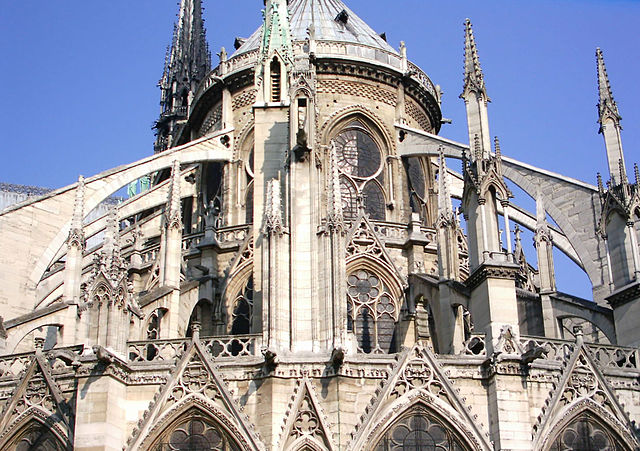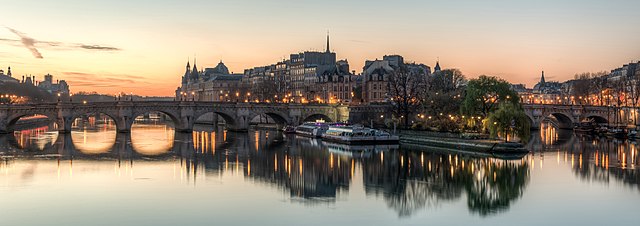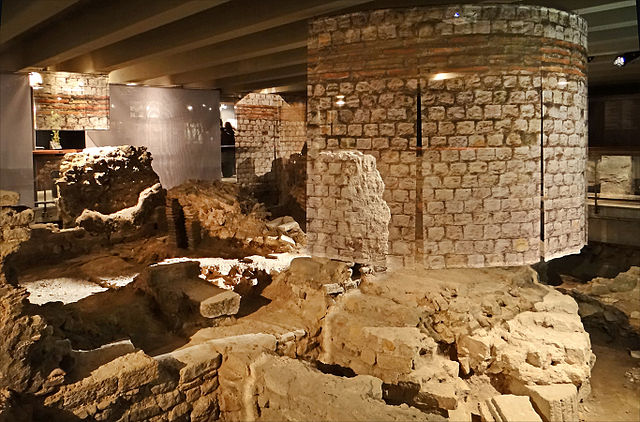Notre-Dame de Paris, referred to simply as Notre-Dame, is a medieval Catholic cathedral on the Île de la Cité, in the 4th arrondissement of Paris, France. The cathedral, dedicated to the Virgin Mary, is considered one of the finest examples of French Gothic architecture. Several attributes set it apart from the earlier Romanesque style, particularly its pioneering use of the rib vault and flying buttress, its enormous and colourful rose windows, and the naturalism and abundance of its sculptural decoration. Notre-Dame also stands out for its three pipe organs and its immense church bells.
South façade and the nave of Notre-Dame in 2017, two years before the fire
Early six-part rib vaults of the nave. The ribs transferred the thrust of the weight of the roof downward and outwards to the pillars and the supporting buttresses.
The massive buttresses which counter the outward thrust from the rib vaults of the nave. The weight of the building-shaped pinnacles helps keep the line of thrust safely within the buttresses.
Later flying buttresses of the apse of Notre-Dame (14th century) reached 15 metres (49 ft) from the wall to the counter-supports.
Île de la Cité is an island in the river Seine in the center of Paris. In the 4th century, it was the site of the fortress of the area governor for the Roman Empire. In 508, Clovis I, the first King of the Franks, established his palace on the island. In the 12th century, it became an important religious center, the home of Notre-Dame cathedral, and the royal chapel of Sainte-Chapelle, as well as the city hospital, the Hôtel-Dieu. It is also the site of the city's oldest surviving bridge, the Pont Neuf.
Île de la Cité, in the center of Paris (2014)
Île de la Cité (2009)
Image of Jupiter on the Pillar of the Boatmen (1st century AD), Cluny, Musée National du Moyen Age
Archeological crypt under the Parvis Notre-Dame – Place Jean-Paul II








